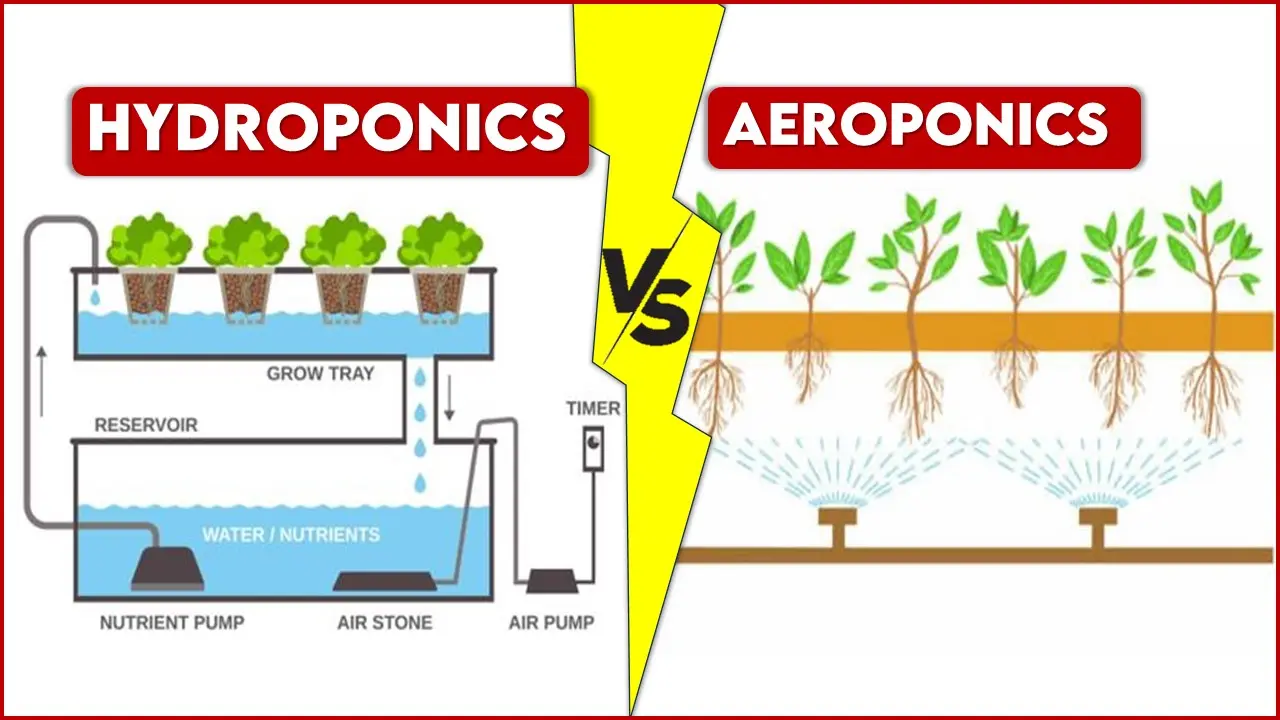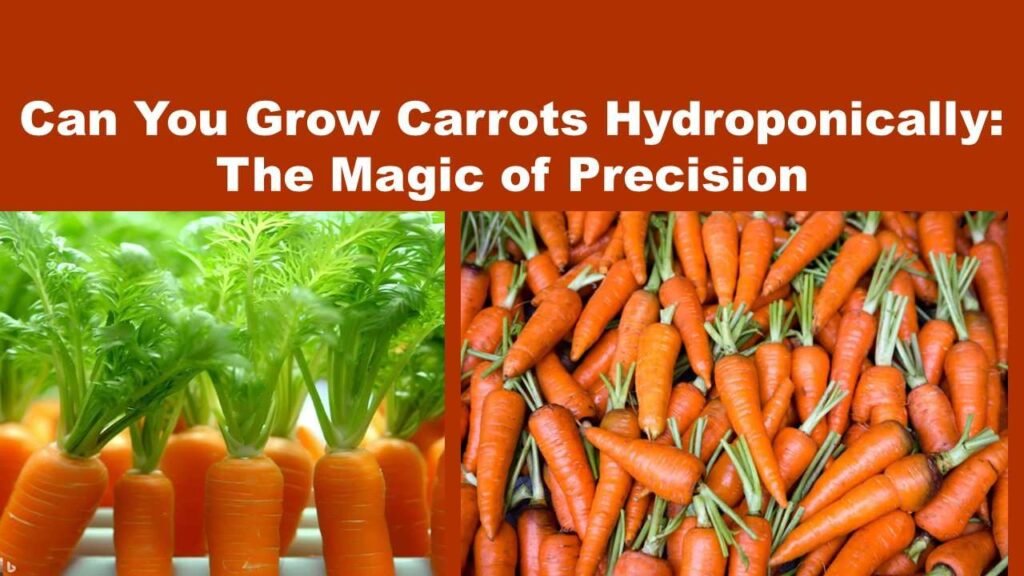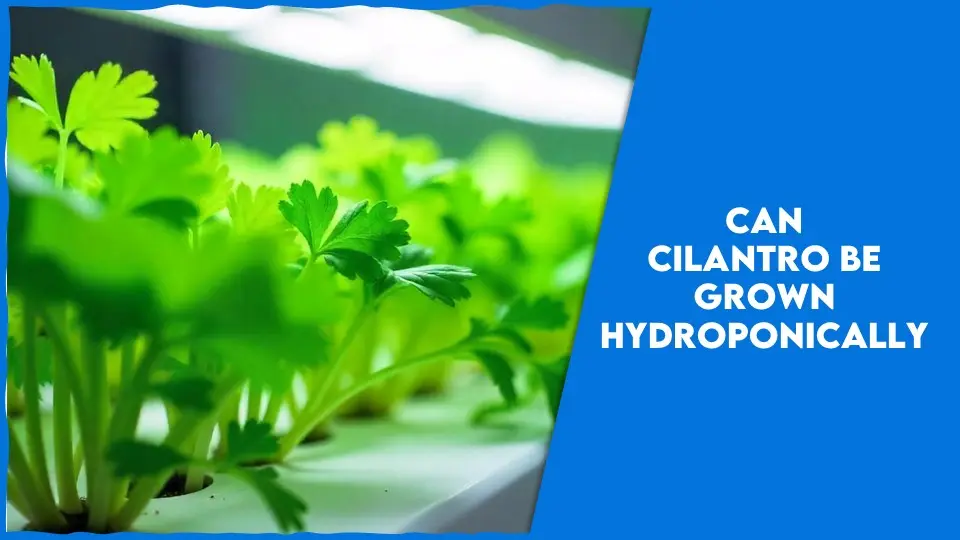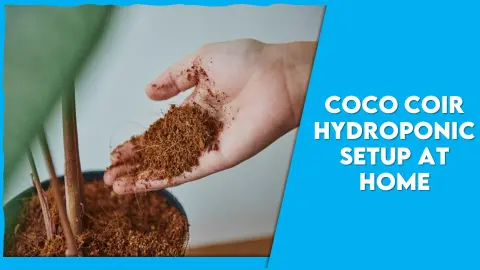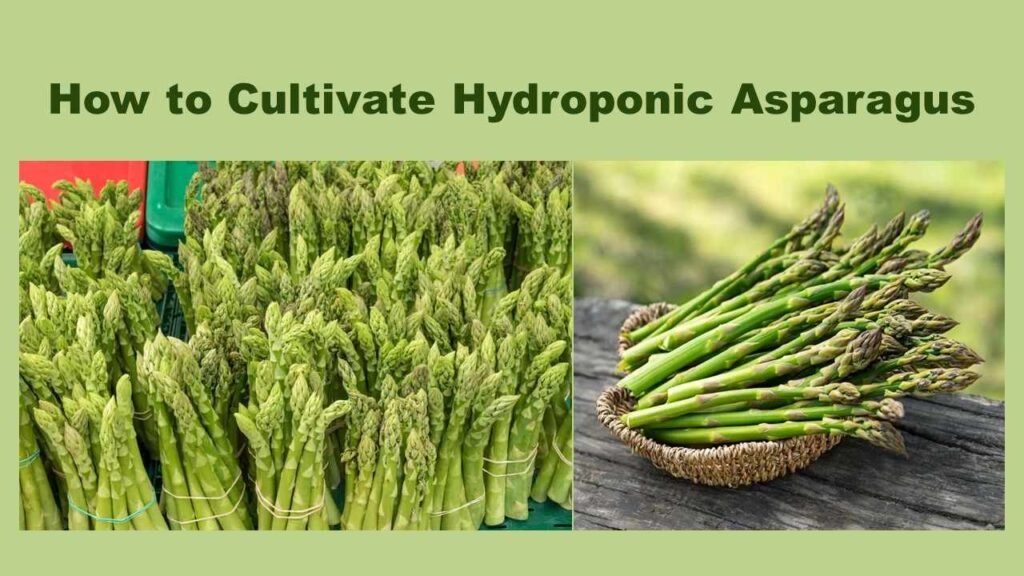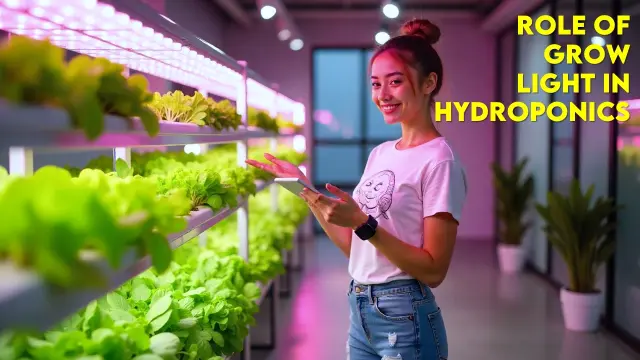Hydroponics vs Aeroponics : a comprehensive analysis
These two words hydroponics vs aeroponics are the new technology of agriculture which is now spreading all over the world. These technologies are very helpful in future as the degradation of soil is increasing and climate change makes the farmer disabled. To survive in future problems future technologies are a good saver. These both techniques are very good where there is less water availability for flood irrigation and open field irrigation is not possible due to lack of water. Having an indoor setup the crop is prevented from the insect pest and high and low temperatures. Also due to the ability to maintain the environmental conditions and light the growth phases of plants can be managed properly.
Now discussing about these two techniques of growing crops:
What is Hydroponics :
Hydroponics is a Latin word made up of two words “hydro” means water and “ponos” means working. In other words it is a water working mechanism without the involvement of soil. Then what should be the thing to hold the roots if soil is not used? Yes for holding the soil media like perlite, vermiculite, cocopeat etc are used. This helps in holding the roots of the plant and beneath the roots the nutrient solution flows which is absorbed by the plant. Hydroponics in other words is just like growing plants in a nutrient solution flow without use of soil, or open field.
Different Types of Hydroponics:
In these techniques plants are grown in a natural substrate or manmade substrate and where plants uptake the nutrient solution for their growth. There are many techniques in hydroponics, their use depends upon the crop type and the need of that time.
Nutrient Film Technique:
Nutrient film technique also known as NFT is a resource efficient technique. In this method the plants are supported by a supporting media like perlite, vermiculite, cocopeat etc. and the nutrient solution flows below the supporting media touching the roots. Then the roots absorb or take up the required media which is flowing and the rest of the solution flows down to the water tank. Yes this may be resource efficient but it has other components which use energy. The flow of solution is periodic or may be continuous.
Deep Water Culture or Floating Root System:
This technique of hydroponic system involves merging of all the roots in a nutrient solution and the plants are holded with the supporting system. In this method the nutrient solution is in the setup and plants roots are fully merged in the nutrient solution and takes up the nutrition and water. Hence the whole roots are under water the aeration is done through a pump or aerated stone placed under the water which is connected to the air pump outside from there the air forced under the water. This air provides enough aeration to the root system and the requirement of oxygen gets fulfilled.
Ebb and Flow:
In this method of hydroponics trays are used in which plants are placed in a supporting media and these trays are filled with nutrient solution in many time intervals. Rest of the solution goes to the reservoir tank through gravity.
Advantages of Hydroponics :
| Advantage | Description |
| Increased Growth Rate | Hydroponic systems provide plants with optimal conditions for growth, resulting in faster growth rates. |
| Higher Yields | By delivering nutrients directly to the roots, hydroponics can lead to higher yields compared to soil-based methods. |
| Water Efficiency | Hydroponic systems use significantly less water than traditional soil-based agriculture. |
| Nutrient Control | Nutrient levels in hydroponic systems can be precisely controlled, ensuring plants receive the right balance of nutrients. |
| Space Efficiency | Hydroponic systems can be set up vertically or in tight spaces, maximizing land usage and increasing yield per area. |
| Reduced Pest Problems | Soil-borne pests and diseases are minimized in hydroponic systems, reducing the need for pesticides. |
| Year-round Production | Hydroponic systems can be operated indoors or in controlled environments, allowing for year-round production. |
| No Soil Requirement | Hydroponic systems eliminate the need for soil, making them suitable for areas with poor soil quality or limited land availability. |
| Environmental Benefits | Hydroponics can reduce the environmental impact of agriculture by minimizing water usage and nutrient runoff. |
Disadvantages of Hydroponics :
| Disadvantages of Hydroponics | Description |
| Initial Setup Costs | Hydroponic systems can require an initial investment in equipment such as pumps, grow lights, timers, and nutrient solutions. This setup cost may be higher compared to traditional soil-based gardening. |
| Technical Knowledge Required | Successful hydroponic gardening often requires a good understanding of plant nutrition, pH levels, water quality, and system maintenance. Beginners may find it challenging to grasp these concepts initially. |
| Risk of System Failure | Hydroponic systems rely on mechanical components like pumps and timers, which can malfunction or break down, leading to crop loss if not promptly addressed. |
| Dependency on Electricity and Water Supply | Many hydroponic setups rely on electricity to power pumps, lighting systems, and climate control equipment. |
| Susceptibility to Disease and Pest Infestations | Although hydroponic systems can reduce the risk of soil-borne diseases, they may still be vulnerable to certain pathogens and pests that can thrive in the nutrient-rich water solution. |
| Limited Crop Variety | While hydroponics can support a wide range of crops, certain varieties may be more challenging to grow hydroponically due to their specific nutrient requirements or growth habits. Traditional soil-based methods may be more suitable for these crops. |
What is Aeroponics :
This method is also a hydroponic system method but it is totally different as in this method the nutrients solution is given to the plant in the form of mist, or the water is in gaseous form. Aeroponics is most suited in tuber and roots crops where the edible or consumable part or desirable parts are roots. In this system the roots of plants are hanging down and the nutrient solution in water is sprayed in various time intervals to the roots. This system does not need any kind of oxygen or aeration source as these roots are hanging in air all the time.
Technology used in Aeroponics:
Technology plays an important role in aeroponics as due to this technologies provide precise control of environmental factors, water conservation, space utilization, pest and disease control, all these contribute to improvisation in production of commerce. Talking about the technologies used in aeroponics are commonly sensors, dispenser related technology, and mechanical pumping systems.
Sensors:
The most important technology in aeroponics is the sensors which are used to determine the environmental conditions eg. Temperature, humidity, nutrient levels, ph etc.. The data drawn from these sensors provides a difference between what is actually the condition and what is the optimum for the crop growing on. Then by adjusting the temperature and other factors enables the optimum growth.
Aeroponics is a new technology , but in this new era it is successfully used in many major crops like tomatoes, strawberries and tubers. One of the main things that makes it useful is that it gives an upper hand to farmers that farmers can grow the crop at any time of the year without the interference of climatic conditions.
Advantages of Aeroponics :
| Aspect | Description |
| Faster Growth Rates | Aeroponic systems promote rapid plant growth due to increased access to oxygen and efficient nutrient uptake. |
| Higher Yields | Aeroponics typically results in higher yields compared to traditional soil-based cultivation methods. |
| Water Efficiency | Aeroponic systems use water more efficiently than soil-based agriculture, as the nutrient solution is misted directly onto the plant roots, reducing water wastage. |
| Utilization of space | These are to be designed to maximize vertical space, for higher plant density and increased productivity in limited space environments. |
| Reduced Disease Risk | Because plants are grown without soil, there is a lower risk of soil-borne diseases and pests, leading to healthier plants and reduced need for pesticides or fungicides. |
| Flexibility in urban areas | Aeroponic systems can be adapted to various environments, including urban areas, greenhouses, and even space stations, providing flexibility in agricultural practices and food production. |
Disadvantages of Aeroponics :
| Aspect | Description |
| Initial Setup Costs | Aeroponic systems can be more expensive to set up compared to traditional soil-based cultivation methods, requiring specialized equipment and technology. |
| Knowledge or Skill Development | Aeroponic systems require technical expertise to set up and maintain. |
| Vulnerability to Power Outages | Aeroponic systems heavily rely on electricity to power pumps and misting systems; thus, power outages can disrupt nutrient delivery and potentially harm plant health. |
| Disease Spread Risk | While aeroponic systems reduce the risk of soil-borne diseases, there’s a risk of pathogens spreading through the misting system, potentially affecting multiple plants in the system. |
| Nutrient Imbalance | Maintaining proper nutrient balance in aeroponic systems can be challenging, as nutrient concentrations need to be carefully monitored and adjusted to prevent deficiencies or toxicities. |
| Susceptibility to Mechanical Failures | Aeroponic systems involve various mechanical components such as pumps, misters, and sensors, which can be prone to failures, leading to disruptions in nutrient delivery and potentially affecting plant growth. |
So all the above facts and information about hydroponics and aeroponics. Now we see the major difference between these two techniques:
Major Differences between Hydroponics vs Aeroponics:
| Aspect | Hydroponics | Aeroponics |
| Growing Medium | Uses an inert medium such as perlite, rockwool, or coconut coir to support plant roots. | Does not use any growing medium; plant roots are suspended in the air and misted with water. |
| Nutrient Delivery | Nutrient solution is directly delivered to plant roots via the inert medium or a recirculating system. | Nutrient solution is misted directly onto plant roots in the form of a fine mist. |
| Oxygen Access | Plant roots are in constant contact with the nutrient solution, providing less access to oxygen. | Plant roots are suspended in the air, providing ample access to oxygen. |
| Water Usage | Generally uses more water compared to aeroponics due to the continuous submersion of roots. | Uses water more efficiently as it’s misted directly onto roots, reducing water wastage. |
| Disease Risk | Higher risk of soil-borne diseases due to the presence of a growing medium. | Lower risk of soil-borne diseases as plants are grown without a medium. |
| Complexity | Generally simpler to set up and maintain compared to aeroponics. | Can be more technically complex to set up and maintain due to misting systems. |
| Plant Growth | Plant growth rates may be slightly slower due to reduced oxygen access. | Promotes faster plant growth due to increased oxygen access and efficient nutrient uptake. |
| Space Efficiency | Requires space for the growing medium, potentially limiting vertical growth. | Can maximize vertical space usage as roots are suspended in the air. |
Conclusion:
Hydroponics vs aeroponics, we see all the facts, all the similarities, all the differences, and all the advantages and disadvantages. Here we can conclude that both are the newer technologies and technical knowledge is needed in both the cases. To opt any of these methods for growing crops totally depends upon the crop which is to be grown and the technical skills of the user. Hence both are the ability to provide a good production and higher returns is managed well.
Join Our Hydroponics Growers Group!
Connect with fellow hydroponics enthusiasts, share your ideas, ask questions, and grow together as a community.
👉 Join WhatsApp Group
